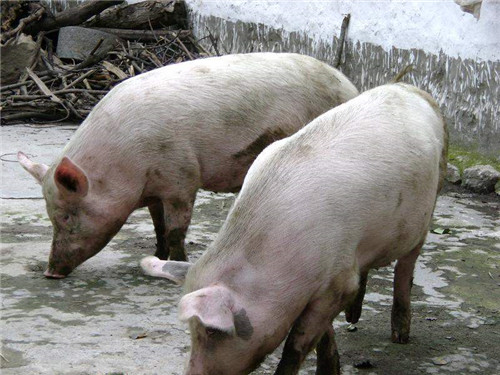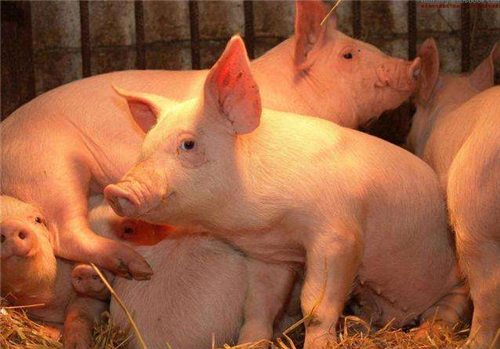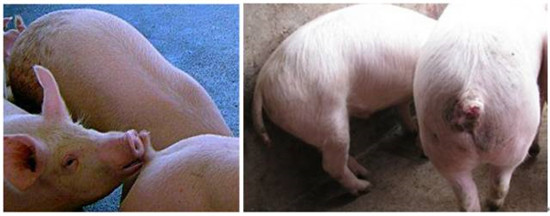Why does the pig cough? Several common diseases that cause cough in pigs! Pig farmers quickly collect
Pig cough is very common in both large and small pig farms. Many pig farmers think that pigs just have a cold. In fact, there are a variety of diseases that cause pig cough, which cannot be generalized, nor should they be treated in a hurry.
So what diseases can cause pigs to cough? Today, let's take a look at several common diseases that can cause cough in pigs.
1. Pneumonia
Pneumonia caused by swine flu is usually acute. The incidence of endemic pneumonia in susceptible groups may be recessive, but it may eventually quickly infect many sows, resulting in a serious illness.
Chronic respiratory disease is a disease that has the greatest impact on the benefit of pig farms. Diseased pigs showed reduced feed intake, slow growth, decreased feed conversion rate and increased mortality in some pigs.
It is necessary to understand the complex relationship among pathogens, pigs and the environment before the disease can be effectively controlled. If the disease is not effectively controlled in pigs for the first time, the disease will be very serious and even cause death.
Porcine rhinitis
Porcine rhinitis is a common respiratory disease in 2-5-month-old pigs. The main manifestations are stuffy nose, sneezing, dyspnea and snoring. When eating, you can see that the pig will stop to take a deep breath after a few bites.

3. Swine cold
Cold is an acute systemic disease with inflammation of upper respiratory tract mucosa caused by cold stimulation as the main symptom.
The clinical manifestations are elevated body temperature, cough, tears and runny nose. It can occur all the year round, but it often occurs in early spring and late autumn when the climate is changeable, among which piglets often occur.
IV. Porcine postfilariasis
Porcine posterior round nematode disease, also known as porcine lung nematode, is a parasitic disease caused by Angiostrongylus and circadian nematodes parasitic on porcine bronchioles and bronchioles. Because the worm is filamentous and parasitic in the lungs, it is named pulmonary filariasis or pulmonary nematode disease.
The disease mainly harms piglets, causes bronchitis and pneumonia, affects the growth and development of piglets and reduces the quality of meat. When the infection is serious, it will lead to the death of a large number of piglets and bring certain losses to the pig industry.
5. Porcine infectious pleurisy
It can infect pigs of different ages and genders. 3-month-old piglets are the most susceptible to infection, mainly through air droplets, and are most likely to be exposed to transmission under concentrated feeding conditions.
Severe climatic conditions and long-distance transportation are easy to cause epidemic, and the transmission among pigs is mainly due to the introduction of infected pigs or chronic infection of pigs.
VI. Swine influenza
Porcine influenza is an acute and highly contagious disease in pigs, which is characterized by sudden onset and rapid spread. the main symptom is upper respiratory tract infection, the disease time is too long, sick pigs are also easy to secondary to porcine parasitosis.
Therefore, the disease should strengthen feeding management, regular disinfection, early detection and early treatment of affected pigs.
7. Aspergillus suis pneumonia
Cause: summer and autumn is the high incidence period of Aspergillus pneumoniae. In many scattered pig farmers, newly purchased commercial young pigs developed symptoms such as coughing, sneezing, asthma and dyspnea after 5 to 7 days of feeding.
The survey found that the pens of all dead pigs with the above symptoms share a common feature: the pens are small, damp, poorly ventilated, and there is a thick layer of mold on the surrounding walls.
The enclosure was not disinfected before the introduction of pigs. after the young pigs entered the enclosure, the mold on the wall entered the body through the respiratory tract (nasal cavity) and digestive tract (tongue licking), and the respiratory system infection occurred.
8. Porcine asthma
Porcine asthma (also known as asthma or endemic pneumonia) is a chronic respiratory infectious disease caused by porcine pneumonia (also known as mycoplasma). The main symptoms are dyspnea, cough, sitting breathing, inactivity, anorexia and so on.
- Prev

What about the fatal flatulence of pigs? The cause of the disease and the methods of prevention and treatment should be known.
What about the fatal flatulence of pigs? The cause of the disease and the methods of prevention and treatment should be known.
- Next

What should we do when a pig bites its tail?
What should we do when a pig bites its tail?
Related
- On the eggshell is a badge full of pride. British Poultry Egg Market and Consumer observation
- British study: 72% of Britons are willing to buy native eggs raised by insects
- Guidelines for friendly egg production revised the increase of space in chicken sheds can not be forced to change feathers and lay eggs.
- Risk of delay in customs clearance Australia suspends lobster exports to China
- Pig semen-the Vector of virus Transmission (4)
- Pig semen-the Vector of virus Transmission (3)
- Five common causes of difficult control of classical swine fever in clinic and their countermeasures
- Foot-and-mouth disease is the most effective way to prevent it!
- PED is the number one killer of piglets and has to be guarded against in autumn and winter.
- What is "yellow fat pig"? Have you ever heard the pig collector talk about "yellow fat pig"?

